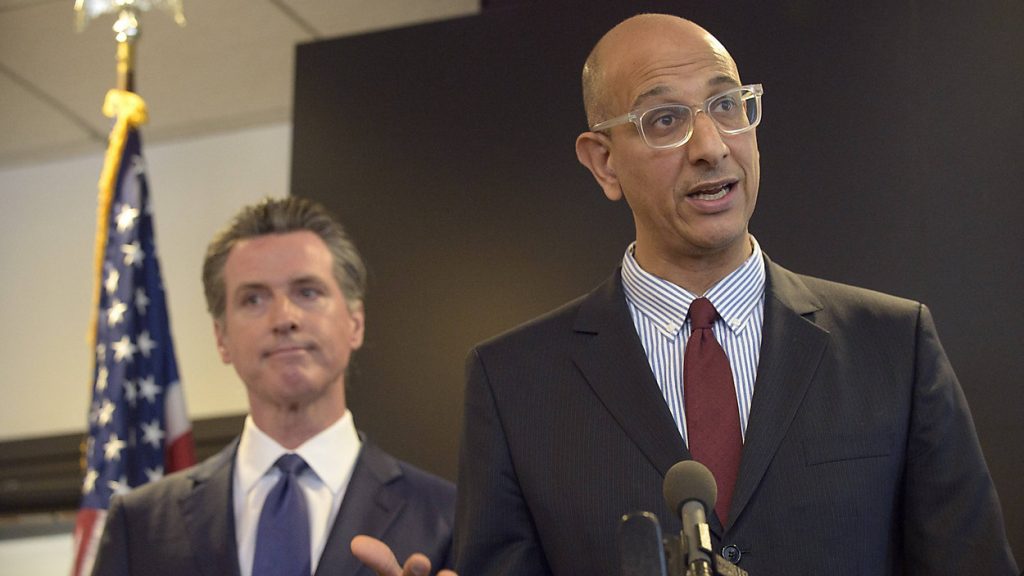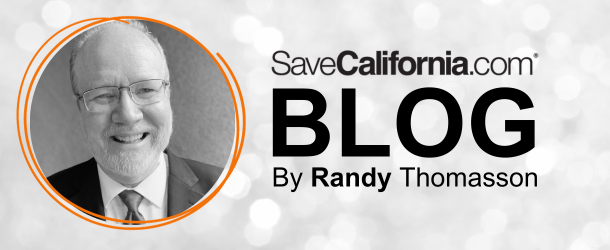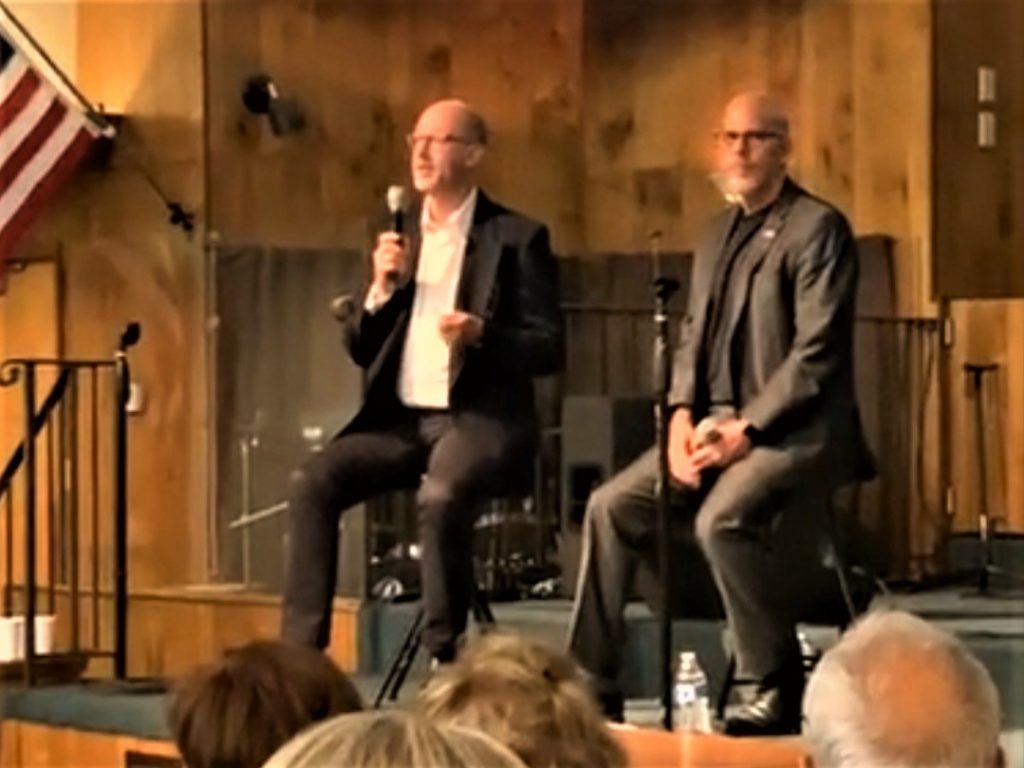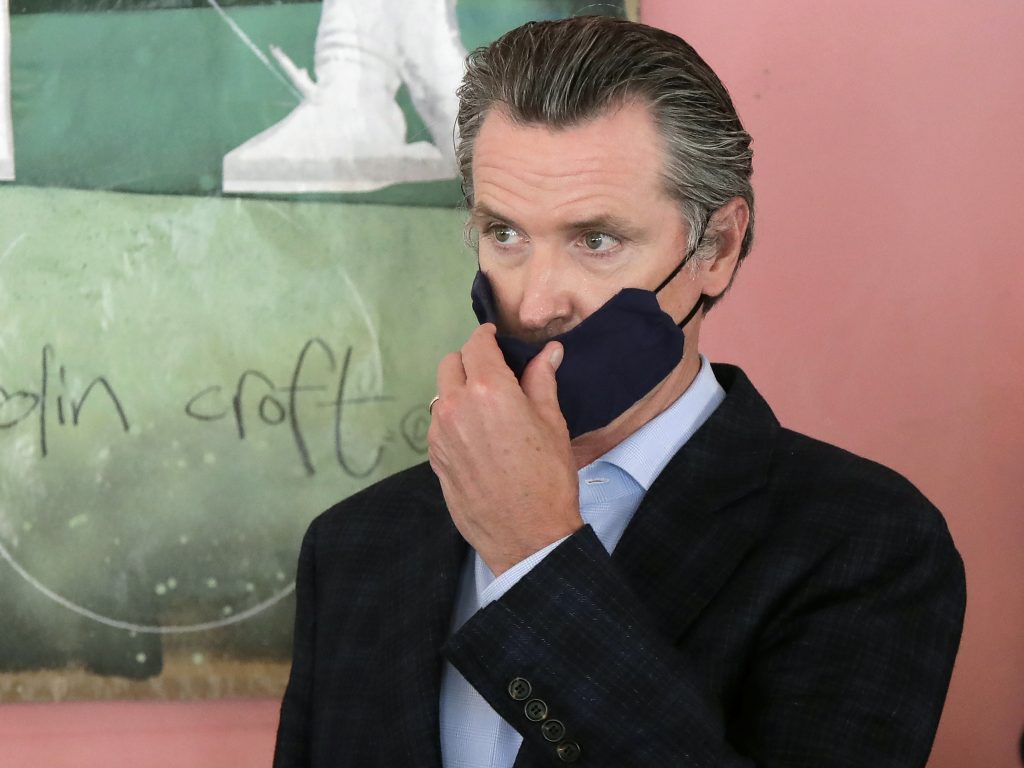
Success! Calls and emails of concerned California achieved an important victory when Cal/OSHA reversed its onerous new “restrictions” upon all indoor businesses. But first, stark evidence of Gavin Newsom’s continuing abuse of Californians.
On May 12, Democrat Gov. Gavin Newsom publicly promised you after June 15 in California there’ll be “No [mask] mandates and no restrictions on businesses large and small.”
Reporter: “Are we looking at masks after June 15?”
Newsom: “No, only in those settings that are indoor — only in those massively large settings, where people from around the world, not just around the country, are convening, and when people are mixing in real dense spaces. Otherwise, we’ll make guidance recommendations, but no mandates. And no mandates and no restrictions on businesses large and small.” See the video
But Newsom lied to you — again. The latest from his Department of Public Health — which serves at Newsom’s pleasure — is they want to muzzle your face in all jobs dealing with health care, public transit, K-12 government schools, and more!
As the Sacramento Bee reported this morning, “Earlier Wednesday [during a] press call, Health and Human Services Secretary Dr. Mark Ghaly outlined a few places Californians will have to wear a mask after the reopening:
• Public transit (Airplanes, buses, taxis, subways, as well as hubs such as airports and bus terminals)
• Indoors in K-12 schools and childcare settings (For now. The state is monitoring the federal guidance, Ghaly said)
• Health care
• Correctional facilities and detention centers
• Homeless shelters, including cooling centers”
What’s more, the Newsom Administration has now added “child care” to this mask mandate list. Does this sound like “no mandates and no restrictions” to you? So Gavin Newsom lied to you about June 15. Why? He prostituted himself to the “health officer” establishment, caring more about them and himself than about you and your family.
So, at this point, there are a few realities that you and I must grasp:
1. It was a victory Wednesday evening as Cal/OSHA reversed its June 3 vote that had tyrannically mandated upon virtually all indoor workers masks and distancing, also coercing tests and jabs — all the way into next year. Halting this Cal/OSHA agenda gets us closer to our goal of normalcy. The Cal/OSHA board will meet June 17 to realign its rules to more closely match the Newsom administration’s “guidelines” and schedule.
Thank you to everyone who called and emailed Gavin Newsom the last several days. You were successful in motivating him to get Cal/OSHA to reverse itself, which will help California reopen faster. In the meantime, small business owners should ignore any rules from Cal/OSHA, which is in complete disarray on enforcing Covid “restrictions.”
As Cal/OSHA admitted in its memo calling for the June 9 emergency meeting, “confusion regarding the requirements of the workplace safety standards … make both enforcement and compliance unduly difficult.” So end your slavery! The virus has burned itself out, masks and other restrictions don’t work and only harm, and Cal/OSHA is currently so confused and impotent, enforcement of any Covid-related “restrictions” is unlikely.
2. Choose slavery or freedom. If you value your basic liberties, resist any state or county or city “restrictions” whatsoever. Again, Covid has burned itself out in California, there’s widespread immunity, hospitals were never overwhelmed, there’s no legal basis for a “state of emergency,” and we never killed small businesses and human rights over the seasonal flu (which unlike Covid, kills children and young adults). Stand up for your God-given liberties and constitutional rights — don’t comply any longer with Newsom or CDPH or Cal/OSHA or the corrupt CDC. Small business owners need to declare independence!
3. Don’t wear a mask anymore. All the reputable science shows masks don’t prevent transmission of influenza or Covid and are harmful to the wearer. What’s more, masks increase the potential to spread one’s “ick” to others. As stores and other places of commerce drop their employee mask mandates, it’s important for you to show your smiling face whenever you shop. Because not only will you breathe healthy air, you’ll remind others what it is to be human. What’s more, your promotion of normalcy will help ward off “vaccine verification,” the ultimate threat to your medical freedom. Do your part to silently proclaim masks aren’t normal, but showing your face is.
In conclusion, the virus has burnt out and there never was and still is no justification for lockdowns, masks, distancing, disinfecting, tests, or jabs. As many retail employees take off their masks, we must double our efforts to attain and maintain normalcy, which is the best evidence that the experimental biological agents misnamed “Covid vaccines” are a “solution” in search of a problem that no longer exists.
A scoffer seeks wisdom and does not find it,
But knowledge is easy to him who understands.
Go from the presence of a foolish man,
When you do not perceive in him the lips of knowledge.
The wisdom of the prudent is to understand his way,
But the folly of fools is deceit.
Proverbs 14:6-8





 RSS 2.0 Feed
RSS 2.0 Feed